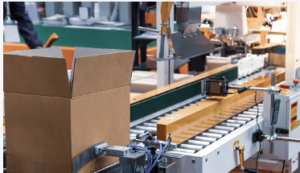RFID (Radio Frequency Identification) is an innovative technology that utilises radio waves to transmit data about objects. The system consists of two elements: tags and readers.
 RAMP-RFID RFID reader come in two varieties: fixed or mobile. The three primary types are Portal, Handheld and Mounted; all communicate with RFID tags.
RAMP-RFID RFID reader come in two varieties: fixed or mobile. The three primary types are Portal, Handheld and Mounted; all communicate with RFID tags.
Detection
RFID tags are attached to items to facilitate more efficient and cost-effective supply chains, inventory control and warehousing management. They also offer a secure way of identifying and tracking products such as food or medicine packaging, clothing garments or cargo weighting at quickening rates.
These tags can be either active or passive; active and semi-passive (battery-assisted) tags contain internal batteries that allow them to broadcast radio waves to a reader, while passive tags rely on energy from the reader for transmission. Passive RFID tags are cheaper than active or semi-passive ones and can be read up to 20 feet away.
Identification
An RAMP-RFID RFID reader is the device responsible for reading radio-frequency identification (RFID) tags on items or products. An RFID tag consists of a small microchip attached to the item that contains data, which communicates with an RFID reader by sending out short-range radio signals. These radio waves are picked up by the reader’s antenna and decoded to reveal all pertinent information from the tag.
RFID tags uniquely identify products or items by their unique identity, such as an electronic serial number. It enables products to be tracked throughout the supply chain from the point of sale.
RFID tags are commonly used to identify people and their possessions. They’re frequently embedded into ID badges and keys, granting access to certain areas. In addition, they may be applied to animals such as livestock and implanted under their skin for extra security.
Different RFID tags exist, each with a distinct frequency and power output. Passive tags rely on electromagnetic energy from the reader for operation; active ones draw power from an internal battery which amplifies signal strength.
Data Capture
An RFID tag reader collects data by scanning an RFID tag attached to an object. The information gathered by the reader is then sent to a computer system that stores and evaluates it.
A RAMP-RFID RFID reader can capture data to enhance asset and inventory management, logistics and transportation operations, and other business processes. Furthermore, this data may be utilised to detect and track people or objects.
RFID systems have three essential elements: an RFID tag or smart label, an RFID reader and an antenna. A tag or smart label contains an integrated circuit and antenna that transmits data using radio waves to the reader (also called an interrogator). The RFID reader then transforms this data into a more helpful form for computer systems.
RFID tags are constructed to withstand extreme temperatures, moisture ingress, hot oil and high pressure. In protecting their functions, RFID tags may be enclosed in plastic, polymer or glass for extra strength.
An RFID tag reader can help optimise warehouse inventory management, shipping and receiving processes, manufacturing workflows and other business operations. It may also enhance customer service and security by eliminating human errors in checkout lines by allowing people to check out without waiting for a cashier or creating a history of the RFID-tagged items and their locations.
RFID systems identify and store data and can also be programmed to send alerts when certain events occur. These could be triggered by RFID readers or other methods like building access control systems, parking management systems, library management systems and more.
Data Transmission
RFID tag readers are devices that use radio waves to transmit data. Depending on the tag type and its application, they can be read at ranges ranging from several centimetres to several kilometres. Once the reader processes, this data helps identify an object by its unique ID code.
RFID tags consist of two components: the antenna and the transceiver. The transceiver generates a weak radio signal that activates the tag’s power and sends information to a reader. The transponder stores information sent directly to the reader – typically taking only milliseconds!
RFID tags transmit data that can be stored on the tag itself, on a microchip or memory card. It may also be saved in a portable reader and uploaded to a host computer.
A reader consists of an antenna, radio frequency module and control unit. Some readers come equipped with screens that display additional information to the user; others record when a tag passes.


